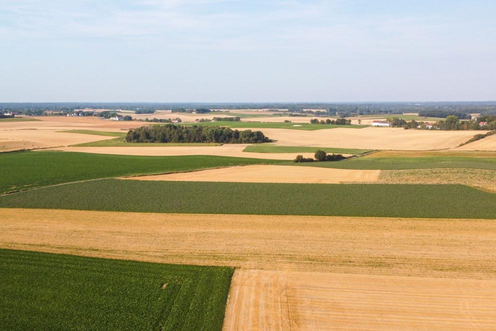
Agriculture has a positive and important role to play in climate change mitigation: crops, hedgerows and trees sequester carbon from the atmosphere and properly managed soils provide carbon storage. However, agriculture contributes more than 10% of the EU’s total greenhouse gas (GHG) emissions, chiefly through the release of methane and nitrous oxide.
The EU is committed to become climate-neutral by 2050, and that means significant efforts to reduce emissions are necessary across all sectors. This includes agriculture, which is also one of the sectors most affected by climate change. As a contribution to identifying possible policy approaches to reducing emissions in this sector, the European Commission has today published a new independent study on “Pricing agricultural emissions and rewarding climate action in the agri-food value chain”.
The study, commissioned by the Commission’s Directorate General for Climate Action, was undertaken by Trinomics and its partners the Institute for European Environmental Policy (IEEP) and Ecologic, together with the Austrian Environment Agency (Umweltbundesamt) and consultancy Carbon Counts. It responds to a 2021 report by the European Court of Auditors, which recommended that the Commission should “assess the potential of applying the polluter-pays principle to agricultural emissions, and reward farmers for long-term carbon removals”. The study aims to investigate possible ways to price GHG emissions from agricultural activities along the agri-food value chain and to explore how this can be accompanied by providing farmers and other landowners with financial incentives for climate action and carbon farming.
The first part of the study presents five policy options as workable examples for an emission trading system (separate from the already existing EU ETS) that could incentivise climate mitigation action in the agri-food sector (AgETS). Here the authors outline the design aspects of five AgETS options covering different GHGs and targeting different actors in the agri-food value chain (not only farmers but also input providers and food processors), and assessed these options according to their effectiveness, efficiency, relevance, coherence and added value.
The study then investigates how a future AgETS could financially reward carbon removals from Land Use, Land Use Change, and Forestry (LULUCF). Here, the authors provide an overview of LULUCF removals options in the EU, put forward key considerations when combining an AgETS with incentives for removals, and assessed the strengths and weaknesses of five potential policy models for linking removals to an AgETS.
In preparing this report, the consortium consulted relevant stakeholders through an expert roundtable, a public workshop, a stakeholder survey and interviews with experts. The feedback from these consultation activities informed the findings presented in the study and is summarised in three separate annexes.
The study recognises benefits in combining design aspects of the different AgETS policy options and establishing a harmonised GHG reporting tool in the EU. In addition, the study stresses the importance of continuously monitoring and regularly evaluating any policy that would link carbon removals in an AgETS market and notes that the simplest policy models that involve the smallest administrative costs and pose less risks to environmental integrity could be an appropriate starting point. Finally, the authors underline that any policy establishing an AgETS policy and linking it to carbon removal support must be accompanied by wider sectoral and economy-wide changes (e.g., transitional aid through the form of subsidies, grants, and loans for farms) to fully enable the land sector to strengthen its sustainability.
Next steps
Today’s study provides first insights on possible pricing and carbon farming measures in the agri-food value chain on how the agriculture and LULUCF sectors could further reduce greenhouse gas emissions and contribute to the EU’s long-term goal of net-zero GHG emissions by 2050. Together with other inputs considering a range of measures, the study will inform the policy debate that will follow the publication in the first quarter of 2024 of the European Commission’s Communication on an EU Climate target for 2040. That Communication, based on a detailed impact assessment, will prepare the ground for a legislative proposal for an EU 2040 climate target through an amendment of the European Climate Law. Any subsequent sectoral legislation to deliver on the 2040 target would follow at a later date, and be subject to the usual preparatory and legislative processes.
Read More
Study: Pricing agricultural emissions and rewarding climate action in the agri-food value chain
Annexed reports summarising the expert roundtable, technical workshop and stakeholder survey
Details
- Publication date
- 13 November 2023
- Author
- Directorate-General for Climate Action
